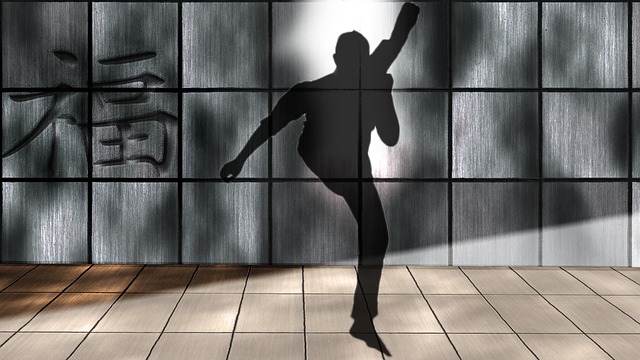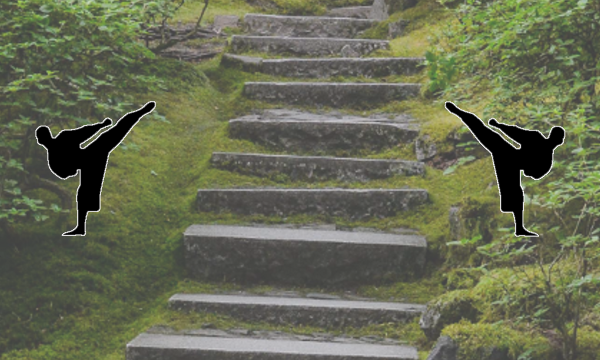
“Never discard knowledge that is not applicable to you, but store it. The day may come when that knowledge could be taught to someone who can apply it.” Ed Parker, Founder of American Kenpo
Articles

Don’t Be a Talker, Flopper or Resister!
Nice article on how to be a good partner during drills. The talker does the drill once or twice then wants to talk about something else. The Flopper offers no resistance, toppling at the slightest touch. The Resister is made of steel on the first repetition, making it difficult to work the basic forms.
Play the game
This article by John Titchen talks about what it takes to be a good partner for drills, including some concepts about holding targets.
A couple of key take aways from the article are:
- Work at the appropriate level of resistance. There is a time when someone is first learning a drill where too much resistance will impede their ability to figure out the body dynamics, but as they become more proficient, they need more resistance in order to pressure test the motions.
- The person receiving the technique (bag holder or person who the self defense technique is being applied to) should be learning too. No one in a two person drill should just be standing there.
The Practical Problem of Teaching Self-Defense
Teaching civilian self-defense can be complicated. Every person is different, and the situations that they need to prepare for are equally different. And, when it comes time to use self-defense skills, it’s never in the best situation. You’ll be injured, alone, out-numbered, out-gunned, caught by surprise, or any combination that works toward your attacker’s advantage and against you. As instructors we need to do our best to give our students a fighting chance in these situations.
When Running Will Get You Killed Against An Active Killer
The standard training these days for civilians in an active killer situation, is to run, hide then fight. Run first. If you can’t run, hide. If you can’t hide, fight. The articles looks at the situation where the killer is in the same room with you, withing 20 feet, and has you targeted. At that point, it is too late to run. You can’t hide when someone is watching you. Your best option (and it’s not a great one) is to attack. Couple of key points in the article:
- It takes a typical law enforcement officer 1.5 seconds to ready their weapon which is about the same amount of time it takes for an average person to cover 21 feet.
- We all tend to get tunnel vision during an aggressive confrontation. Shifting five feet one way or another can be enough to cause the aggressor to get you back into focus.
- And, by attacking, you are resetting the OODA loop. (Observe, Orient, Decide, Act). A hesitation by the attacker of even a second can allow you to get into position.
Get out of Jail
It’s important to understand the self-defense laws in the area that you live, but it can get tricky when you travel. Different states have different laws, and it is even more complicated when you travel to a different country. This article by Kris Wilder explains the AOJP principle.
- A (Ability) – Does the attacker have the ability to harm you?
- O (Opportunity) – Does the attacker have the immediate opportunity to harm you.?
- J (Jeopardy) – Are you in immediate jeopardy of being harmed?
- P (Preclusion) – Even if everything else is true, can you do something else (like flee) to get out of harm’s way?
Books
Infinite Insights into Kenpo: Mental Stimulation
I find it helpful to read the works of the old masters to gain a greater insight into karate. Ed Parker is the founder of American Kenpo and a leader in popularizing the martial arts in the united states. I read Mr Parker’s Infinite Insights during my early days at Action Karate, and I’ve recently picked them up again. In the words of Mr Parker, “Never discard knowledge that is not applicable to you, but store it. The day may come when that knowledge could be taught to someone who can apply it.” The first time I read it, I looked for only those things that could apply to my own training. Now, I’m looking at it to see how it could apply to others.
Podcasts

Iain talks to Peter Consterdine 9th dan!
Iain Abernethy interviews Peter Consterdine. Peter was one of the founders of the British Combat Association (BCA), World Combat Association (WCA) and is one of the forerunners on focusing on realistic/pragmatic training in Karate. The sound quality is off on this one, but there is a lot of great content that makes it worth listening to multiple times.
Videos
![]()
Watch “Karate Nerd in Okinawa” (Free Web Series)
Jesse Enkamp gives us all a chance to visit Okinawa vicariously through his 8 part web series. Each episode is about 15 minutes long. In it he explores the culture and landmarks of the birthplace of karate, and they end with a brief glimpse of a local dojo.
Double Hip Action – Knock Out Punch
This video demonstrates the double hip action that Iain Abernethy mentions in his interview with Peter Consterdine. Kyoshi Dave Kovar also talks about using hip action to generate speed and power during his seminars. As a young student training in Shotokan, I often recall Sensei Vernon telling me to use my hip, a message I often repeating when I am teaching.


